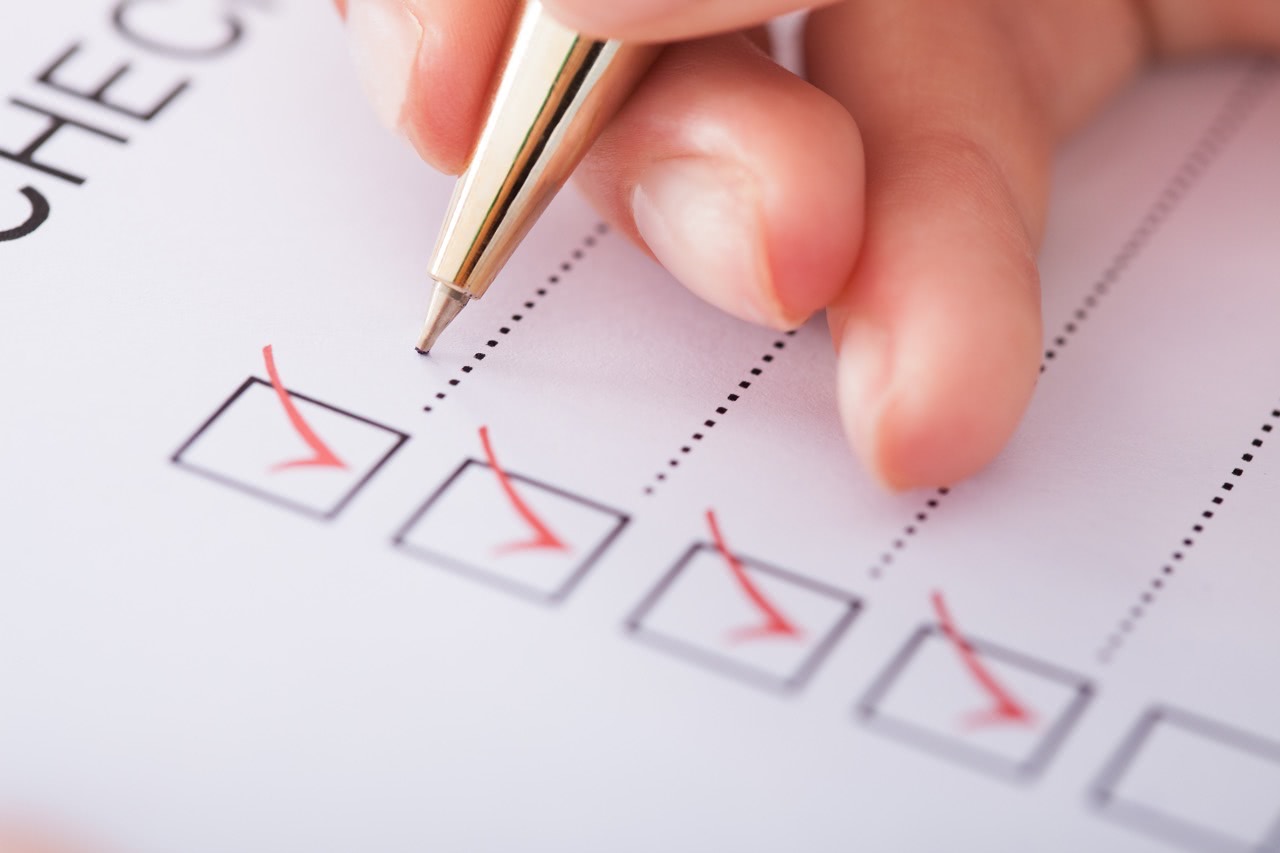After I finish writing a blog post, there are still 43 things I need to do to publish it. Some are pretty trivial, but they still need done.
I used to worry about making mistakes. Several times, I published a post without adding a more tag (<!-- more --> — it’s a WordPress thing), or with an empty link (<a href="">), or at an oddball time (right day, but 3:47 pm instead of midnight). Once, I even forgot to schedule the post at all—I left it as a draft.
None of these were a big deal and each was quickly and easily rectified. It was, however, increasing the cognitive load to publish a post, stressing me out, and making it take longer than I wanted it to.
So I did what any self-respecting productivity nerd would do: I solved the problem one last time by making a checklist.
A checklist is a documented series of actions. It can walk you through getting a 787 Dreamliner ready for takeoff or how to bake a cake. It formalizes a process, helps you develop a habit, and tracks your progress.
There are two types of checklists, read-do and do-confirm.
A read-do checklist is read first, then the actions are performed (read the list, then do it). These types of checklists are more formal in nature, when there are strict policies and regulations in place to make sure a specific sequence of steps are performed in order. You don’t want to launch a missle, fly an airplane, or remove an appendix without making sure you’ve followed procedure.
You can also use any checklist as a read-do checklist when you’re first learning the process. Just follow the list—it will walk you through it.
A do-confirm checklist is either less formal or more familiar. You’ve done this enough times that you’ve gotten the hang of it. If you missed something, it’s easier to circle back and complete a step out-of-order. This type of checklist is serving as a backup to your brain, reinforcing the process. It’s got your back.
My favorite app for checklists is OmniOutliner. It’s a beautiful app. You can easily create a hierarchical list with complex steps broken down into clear substeps, add notes to each step, show and collapse sections, and check off the steps as you do them, of course.
Checklists don’t require any special software. You already have an app that will handle them, whether it’s Evernote, Pages, Notes, or Reminders, or a pencil and paper. If you want to check off the steps as you complete them, either to track your progress in case you get interrupted or just want the sheer satisfaction of checking off a bunch of boxes), pick something that has checkboxes.
When you follow a checklist, you will get consistent results. The process is documented, literally outlined for you. Instead of wasting time remembering what the next step is, or worrying whether there’s anything you’ve forgotten outright, you can breeze through it.
A well-documented process is easily delegated, too. You can hand a clipboard to someone and know that they’ll go through all the same steps that you would. Training a new hire becomes a lot easier.
A checklist can also help you train yourself as you develop new routines. If you’re trying to change your bedtime routine, write down the ideal routine. Start off treating the checklist as read-do, then switch to do-confirm as you get the hang of it. Even the act of writing it out can focus your subconscious and help you start adhering to the new routine.
Initially, I had a hard time overcoming the feeling that I shouldn’t need a checklist—they’re for people who don’t know what they’re doing. I finally swallowed my pride, admitted that I didn’t know what I was doing (that’s why I was making mistakes) and started making a checklist.
The next post I published, I wrote down each step as I did it. The next post, I followed the checklist and made corrections—a lot of corrections. It took several weeks to optimize and stabilize the workflow.
Now, I still tweak it from time to time as my process evolves, but I’ve learned to trust it. I bring up the OmniOutliner document and have it side-by-side with the Safari window as I’m getting the post ready to publish. When the post is ready to go, I can go do something else, confident that it really is ready to go.
Question: What process could you turn into a checklist? Share your thoughts in the comments, on Twitter, LinkedIn, or Facebook.

